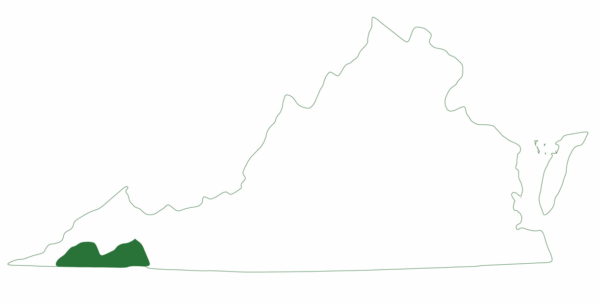Fact File
Scientific Name: Trachemys scripta troostii
Classification: Reptilia, Order Testudines, Family Emydidae
Conservation Status:
- Species of Greatest Conservation Need-Tier 3c on the Virginia Wildlife Action Plan
Size: Up to 12.2 inches
Identifying Characteristics
This is a large freshwater turtle that reaches a length of 11.4 inches. The carapace (upper shell) is oval, weakly keeled, and olive to brown with a thin yellow stripe in each pleural (costal) scutes. There may be short yellow bars on the top of the marginal scutes and a black spot on the bottom of the marginals. The plastron (lower shell) is often yellow with dark donut-shaped (ocellus) marks in several or all scutes. These marks can also appear to be smudges or spots, or the plastron can be unmarked. The skin is greenish to olive brown with yellow stripes. The front legs have multiple yellow stripes with the bottom stripe being the broadest. There is a yellow or orange-red stripe behind each eye, which may be faded in older adults. Many older males will melanize (turn black) and lose their characteristic pattern. Breeding takes place from March to early June. The nests may be constructed large distances from the water. The female usually lays between 5-18 eggs. This turtle is a communal basker. It usually basks on logs and rocks protruding out of the water and may bask with other species, such as Northern Map Turtle (Graptemys geographica). In colder weather, this turtle goes underwater and hibernates in the mud. It may also use muskrat holes and hollow stumps to hibernate.
Habitat
This species prefers quiet waters with muddy bottoms. Areas with a profusion of aquatic vegetation, organic substrate, and overhanging basking spots are especially favored.
Distribution:
This species has been confirmed from one location in the North Fork of the Holston River, Scott County. It is found throughout the Mississippi drainage, the Tennessee River drainage, and southeastern U.S.

Did you know?
In the 1960s and early 1970s, millions of sliders were sold as pets in the United States. However, concerns over Salmonella poisoning catalyzed the Food and Drug Administration in 1975 to ban the sale of turtles with a carapace length less than 4 inches.
Last updated: July 18, 2024
The Virginia Department of Wildlife Resources Species Profile Database serves as a repository of information for Virginia’s fish and wildlife species. The database is managed and curated by the Wildlife Information and Environmental Services (WIES) program. Species profile data, distribution information, and photography is generated by the Virginia Department of Wildlife Resources, State and Federal agencies, Collection Permittees, and other trusted partners. This product is not suitable for legal, engineering, or surveying use. The Virginia Department of Wildlife Resources does not accept responsibility for any missing data, inaccuracies, or other errors which may exist. In accordance with the terms of service for this product, you agree to this disclaimer.

